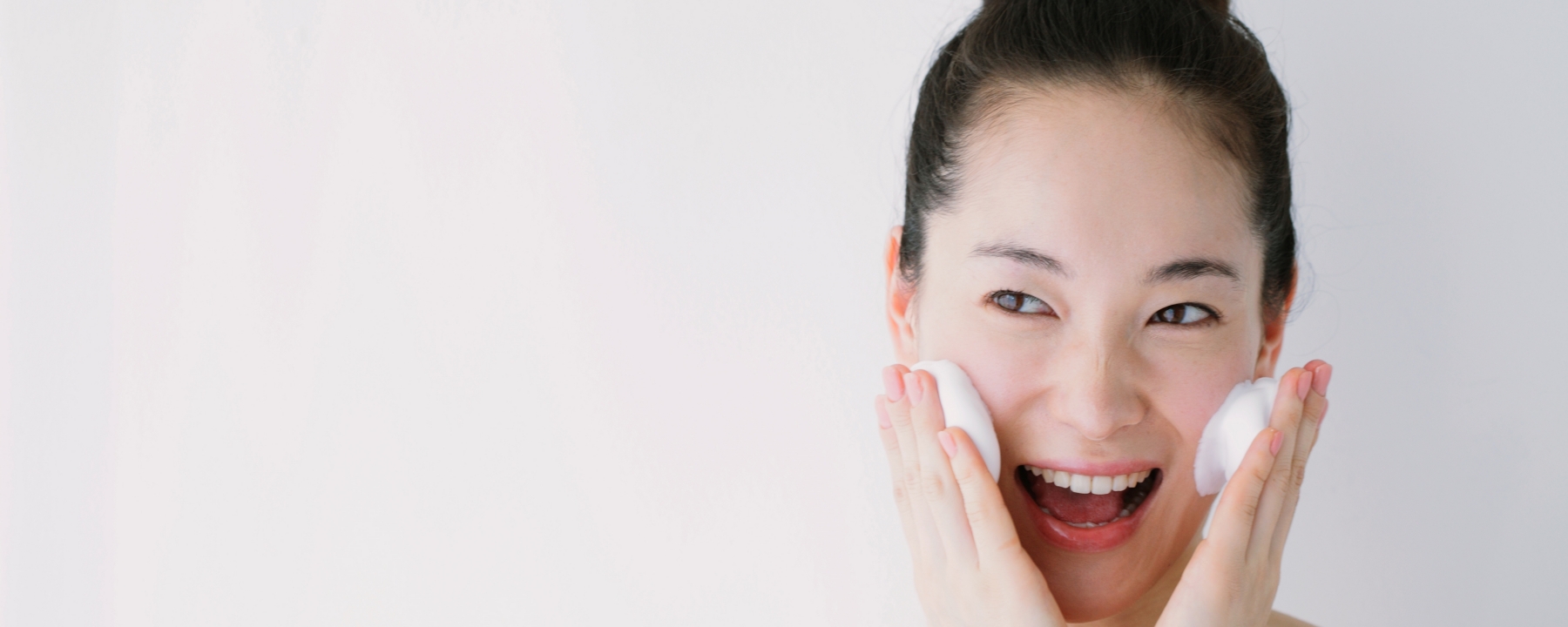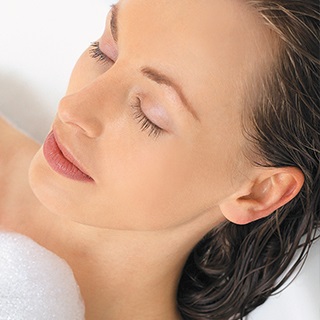
Well aging
Peels support your skin
Skin peels: You’ve almost certainly heard of them, but are they part of your personal care routine? A peel allows you to nourish and support your skin. There are various products that are suitable for different skin types.
Turn old into new: Okay, so skincare doesn't work so easily and even peels can't perform magic. But if we take a look at our skin, turning something old into something new is not as far-fetched as you might think. The older cell layers are removed and in this way, the newer cell layers have the chance to become visible more quickly. The special thing about peels in skincare: in principle, the effect is immediately visible.
The skin is not only the body's largest organ, but also the structural part that is in direct contact with the environment. It has many functions, forms a protective layer against environmental influences, and can be seen by us and other people – this is what makes its appearance and health so important. It consists of several layers, which in turn are subdivided.
At the very top is the corneal layer, which consists of dead cells. The corneal cells located there are formed in the deeper germ layer by keratinocytes. These cells travel up to the surface, become keratinized and are eventually shed. We lose over 200 million skin cells a day (or about 58 kg in our lives)! This process lasts 30 days, in which the epidermis is constantly renewed (the renewal of the corneal layer takes about 14 days). This is exactly where the different types of skin peels come into play.
5 good reasons to care for your skin
- It is good for personal hygiene
- It protects against harmful environmental influences
- It slows down natural aging
- It boosts self-esteem
- It increases social acceptance
Like a skin booster
Peels are one of the most intensive ways to cleanse the skin. We only have to consider the definition of 'exfoliate', which means 'to shed from a surface in scales or layers'. In skin care, peels support the skin's renewal process. A skin peel removes skin flakes and keratinized skin from the skin surface that fail to loosen on their own. To be more precise: they usually become loose on their own, with shedding skin caused by illness being the exception. Sometimes, however, this process alone does not happen quite so evenly or quite so quickly.
Why is it important to remove skin flakes? If these “old” skin flakes remain – along with keratinized skin – it can cause pores to become clogged (resulting in blackheads). Furthermore, impurities can lead to skin problems and the skin can appear dull and tired. Skincare products are not really absorbed by the “new” skin. It’s not “just” about the face. There are skin peel products for the whole body. Even hands and feet should benefit from this type of cosmetic treatment.
To remove dead skin cells, you can choose between mechanical peels and chemical peels. Although the mode of action is different, both types have the same goal and offer the same benefits:
- Better blood circulation to the skin
- Removal of skin impurities. Down to the pores.
- Better protection against environmental influences
- Skin looks brighter and more vibrant after use
- Noticeably less wrinkles
- Better cell renewal
- Care products can work better
- Strengthening/building the skin barrier
A distinction is also made between superficial, medium and deep peels. Cosmetics focus on very superficial peels that only have an effect on the top layers of the stratum corneum (corneal layer).
A massage for the skin & soul
Although there is a suitable peel for virtually every skin type, in some cases it is better to avoid using one. Have a skin injury, open wound or extremely irritated skin? Don't scratch and don't peel. In a beauty parlor, face mapping is often performed to determine the condition of the skin. You can then decide which type of peel is most suitable or whether the skin would be able to tolerate it at the moment.
For all recipes and options when it comes to DIY peels: Factoring in the partly exotic ingredients and various abrasive bodies used, it should be noted that salt, sugar, sand, ground seeds/nuts, etc. are sometimes very sharp-edged and can lead to minor injuries and cracks in the skin. This can cause microorganisms and other irritating substances to penetrate the skin, have adverse effect and cause additional irritation.
First, let’s look at mechanical peels. In short, they are considered a massage for the skin and soul. These peels contain tiny particles called abrasives. In the past, peels had a poor reputation because microplastics were processed to achieve the required grinding and rubbing effect.
Manufacturers have kept up with the times and brought environmentally friendly solutions like our Cegesoft® Peel onto the market. These little helpers can consist of cornmeal, rice extract, healing clay or wax balls, for example. There are also numerous aids for this type of peel, such as gloves, brushes, pads or pumice stones. This means that you don't have to worry anymore about digesting parts of your skin peel at the same time as your fish fillet at dinner.
Home use use vs. dermatology
The other option is a chemical peel. This type of skin treatment relies on the use of acids. These acids can be used to remove the dead upper skin flakes. Mild acids in low concentrations are used in products for home use. So: “acid” may sound scary, but there's no need to be deterred. In most cases, these are fruit acids or even lactic acids that initiate the process. We'd like to offer an oft-used quote here: “It is the dose that makes the poison!” For these acids, the concentration used, exposure time, etc. are also important. Too much is too much and the skin can be severely irritated in these cases.
The two abbreviations AHA and BHA repeatedly come into play in connection with chemical peels. An AHA peel is alpha hydroxy acid (glycolic acid, almond acid or lactic acid) and works on the surface of the skin. AHA does not penetrate so deeply into the pores and is recommended for dry skin in particular. After use, the skin is particularly sensitive to light and sun. Use it during the day, then remember to apply sunscreen.
BHA is a beta hydroxy acid. The salicylic acid used in BHA can penetrate deeper into the pores, is oil-dissolving, can remove clogging and is particularly suitable for oily skin. One advantage here is the anti-inflammatory effect.
BASF Night Peeling
Gentle and effective, the BASF Night Peeling including AH-Care® G-60 active ingredient contributes to refine the skin texture thanks to progressive micro-peeling action, and to promote the removal of dead cells, revealing a brighter and younger looking skin.
More informationRest and relaxation
Chemical peels are also used by dermatologists. Acids in higher concentrations can be used in derma-peeling to intensify the effect and work more deeply in the skin. This dermatological variant must be performed by professionals and can be used in particular to treat some types of acne, sun-damaged skin, rough skin and discolored skin. In other words, “normal” skincare evolves into a cosmetic treatment. In such cases, the skin needs time to regenerate, rest and recover.
Another way to exfoliate your skin is to use enzymes. The enzymes used are activated by moisture and heat and essentially digest the dead cells and keratinized skin. There is no need for rubbing. Simply apply, leave it and wait.
In general, the following applies to all peels: Don't overdo it. What’s our favorite saying? It is the dose that makes the poison. On a regular basis: yes. Daily and continuously: no. By the way, evening is a good time to apply a peel. Then the skin has enough time overnight to regenerate and glow again the next morning.


